It’s rare for there to be meaningful heat in the Netherlands, often only a handful of times each summer. However, as luck would have it – one of those times is right now. And, for the last couple weeks I’ve been using and wearing the new CORE continuous body temperature sensor during all my workouts. This small sensor, about the size of 1.5 dominos, can be mounted numerous ways. In my case, I simply wore it attached to a heart rate strap. However, it can also attach via stickers or arm bands.
Ultimately, it broadcasts your body’s skin and core temperature (two different data points) out over ANT+ & Bluetooth Smart. Thus, I was able to track my core temperature within 0.1°C on my Garmin Fenix 6 watch just the same as my Wahoo ROAM bike computer, and my smartphone as well.
Why though?
Certainly while the weather here (topping out at 91°F/32.7°C) isn’t likely to get me into too much trouble given the duration of most of my workouts, hotter temperatures and longer durations could – and a UCI WorldTour team this season is using it to keep tabs on their riders. The sensor can also monitor in a 24×7 mode as well, useful for longer term tracking – or even tracking how long it takes to get the body cooled back down after a horrifically hot workout.
And beyond sport there are far greater potential applications, primarily in so-called ‘workforce monitoring’, which can include hot factories, military deployments in the desert, and more (even COVID-19 related implementations). In these situations the CORE can even connect to NPE WASP systems for Skynet style data monitoring.
However, that’s all besides the point. I was mostly curious about the sports tech side, and whether or not it’s worth the 249EUR for the sensor. They just launched the product for sale today, though, it’s definitely still beta-quality. As such, I did encounter numerous beta bugs that sound like they’re already in the pipeline to get resolved before units start shipping to everyone else. I’ll cover these down below though. As usual, once I’m done with this thing I’ll send the loaner unit back to them.
Speaking of which, ‘them’, is technically a company called greenTEG AG, which was a spin-off of the Swiss Federal Institute of Technology (ETH) in 2009. They’ve been making other sensors since then.
Setup & Connectivity:
So first up is the unboxing. In the box you’ll find the CORE temp sensor, as well as a pile of sticky pads.
These allow you to mount it to your body without needing a strap. CORE says official spec for each sticker is 1 day, but in practice it’s around 3 days. Though I haven’t quite tried them yet. It’s on the to-do list.
You’ll also find a small USB charging cable, which uses magnets to attach to the CORE pod and charge it up. CORE claims a battery life of 6 days of monitoring, though I haven’t quite been able to verify that thus far due to some beta bugs around charging indicators. I did however discover that it doesn’t charge well on USB battery packs, since the power draw is so low that most USB battery packs simply think it stopped requesting a charge. So you’ll want to charge it with a wall port, computer, or something else that isn’t a smart charger.
Here’s a closer look at the back of the pod, and a size comparison to a standard SD card:
This is the skin side of the pod, and the unit works via heat transfer from your body to it, and then measuring said heat. The company says it’ll even work underwater swimming to accurately measure your temperature.
As noted earlier there’s numerous ways you can mount it. On their site they’ve got armbands and such, but probably the most common for most athletes will just be to a standard chest heart rate strap. Sure, you may be using an optical HR sensor on your watch these days, but if not – this is an easy method. The pod simply slides into the strap.
The smartphone app pairs with the CORE and allows you to configure a handful of settings on the pod/app, but for the most part it’s slim pickins today:
Notably however, it does allow you to pair to a heart rate strap, which in turn shows that data in the app (and at present, helps to trigger enablement of sport mode versus 24×7 mode).
Meanwhile, I got to installing the Connect IQ apps. These will be available for most recent Garmin devices. In my case I installed it on a Garmin Fenix 6 and Edge 830 (and 530). While it’s not published in the Garmin Connect IQ app store yet, they sent the beta files over to install manually. Then I just configured the data field on my watch/bike computers like any other data field.
Meanwhile, on the Wahoo ROAM, I paired it up as a muscle oxygen sensor, such as what Moxy uses. Of course, this is very different data, but for now CORE is simply utilizing that data field for their purposes. And, it works just fine for now. Longer term they say they’re working with Wahoo to get proper data support there.
With that, I’m ready to roll!
Usage & Data:
My testing started last week in hot desert-like conditions. I first did a test ride to validate the basics of it, paired up with an Edge 830 (Connect IQ app), a Fenix 6 Pro (Connect IQ app), and the Wahoo ROAM (hijacking the built-in SMO2 muscle oxygen field). Here it is on the Edge 830:
Then on the Wahoo ROAM. In the case of the ROAM, it’s using the muscle oxygen field so the unit label is showing THB instead of Celsius, and then it actually alternates the data back and forth every second showing diag information. It’s a little weird, but a stop-gap till they can sort out proper integration with Wahoo. On the bright side, this data is available to 3rd party apps like Today’s Plan.
Interestingly, the company says they’re working with ANT+ to slightly update the ‘Environmental Temperature’ ANT+ profile to be better suited for body temperature versus outside temperature.
On the ride, it ended up being slightly cooler than I expected. Despite being desert-like and hot-out, I ended up going for a bit of an easier ride, and the cooling effect of the rolling terrain meant I didn’t overheat much.
So, aiming to double-down on things I headed out the next morning for a trail-run up the side of a mountain/hill thing. About 1,000ft/330m of elevation gain in 5K, all with virtually no shade on a bright sunny day.
In this case, I had it paired to both the Fenix 6 Pro and iPhone app concurrently, so I could monitor the temperature. During the run my core temperature very slightly rose from 100.5°F/38.0°C, as I climbed. Here’s a photo I took at 99.5°F along the way.
In fact, you see this quite easily on the app, whereby my core temp was climbing as I kept running upwards. However, once I reached my turnaround point and started descending, you can start to see my core temp taper back out again and decline. Only to rise slightly as I ran along the flats back to my starting point. The times are all wonky on this one, but the data is correct.
Kinda cool, huh?
Normally, you’d also be able to see this data afterwards in Garmin Connect, just like any other plotted Connect IQ app data chart. But because the app isn’t published yet in the CIQ app store, it won’t enumerate there. However, fear not – it still enumerates within the DCR Analyzer, because it’s cool like that. Or, hot I guess. Since the CORE system simply plots the data into the standard .FIT file developer fields, we can enumerate it, and above you can see one of my trainer rides from earlier this week (on The Sufferfest).
In particular, note the rise in body temperature in the last half. Also note – there’s no functional A/C in that part of the DCR Cave.
(I’d have more cool data to show from my rides/runs, but alas the beta Connect IQ app isn’t super stable, and often would either not record properly or not connect properly. CORE says they’re getting close to having those issues resolved in the next app/unit update.)
Now – none of my rides were 4-5 hour long slog fests in searing heat. In those scenarios the unit would become far more viable. So much so that one unnamed UCI WorldTour team is using it this year for training, and plans to also use it at the Tour de France later this month. At present that team doesn’t wish itself to be disclosed. However, there are some snippets of data from them below. And if you’re into cycling heat data, there’s a study from the UCI World Championships where they used e-pills to track rider data too.
In any case, this is a 4hr+ long ride, and you can see the tracking in comparison to an e-pill. Unfortunately I don’t have any context on this ride in terms of external temperature, or ride intensity.
Whereas on this one you see a bit more lag between the e-pill and CORE, seemingly about 10 mins, as well as it undercutting slightly by half a degree when the temperature drops.
They also have some data (non-WorldTour team), showing multiple days being tracked. In this case you can see the comparison there as well. In discussing it with them, they noted that the product accuracy has improved slightly since this April data set.
Side note: While looking at the pricing on their website, I noticed they even sell this nifty 6-unit charging station. Which obviously is built exactly for the team scenario:
They say that the stickers on the CORE are officially spec’d at one-day, but realistically they get about three days of life from them. Stickers come in an 8 pack for 7EUR. For parents, one tidbit you’ll find interesting is that some of the CORE product team will simply stick a CORE on one of their kids when they get a fever, as an easy and non-intrusive way to monitor them. Though note that it’s not a medical device and not certified as such.
Finally, what about accuracy? Well, that’s a bit tougher for me to validate at this point. For two reasons. First, is that while there are some simple and widely available ways to measure temperature (such as when your kid is sick), these methods don’t tend to be super accurate. And more importantly – they don’t tend to work well mid-workout. These include ear and contactless thermometers.
The next chunk of devices that could be used to validate accuracy aren’t either readily available or more invasive – such as an e-pill. Or, even if readily available, aren’t as ideal (again), sporting wise out and about on the trails or roadways (such as rectal probes, or bladder catheters, among others…). I’m not entirely sure what my riding buddies would think of me doing a rectal thermometer test mid-ride.
So for the moment, I’m going to defer to their own accuracy testing on this (seen above). They’ve put together some charts around this with comparisons against an e-pill measuring core temperature. Obviously, it’s work done by them, so…take that with whatever grain of salt you want. It is clear though from my testing that my body temperature goes up and down at the exact moments I expect it to. And at present, all of it felt pretty normal. I didn’t try and go out and run a marathon or half-marathon in 90°F/32°C heat. Mostly, because I’ve already done that, thank you very much. And the last time I did that I nearly ended up in the medic tent (and, The Girl actually did spend time in said tent).
Going Forward:
So should you go out and buy one? Frankly, it’s gonna depend on where you live/train/race, and whether or not that place is hot. If you’re living somewhere like the Netherlands (me), there’s little reason to get one. It’s just not hot enough, often enough, for heat-related issues to matter much from a sports standpoint.
However, if you’re training in hot environments for hours on end – then it makes more sense. There’s plenty of studies out there for different sports on the impact of heat and athletic performance, and that’s before you even approach safety/danger aspects of training in extreme temperatures. There’s also studies on the impact of acclimation as well for sport performance. The number most studies seem to focus on is about 40°C for the core temperature before it starts to impact performance (for some, more than others).
We know that pro cyclists spend significant amounts of time and money trying to cool their bodies prior to hot stages. I showed that at the Tour Down Under two years ago with Team BMC and their chilling vests. Head of Performance, Dr. Daniel Green for BMC then, is now Head of Performance Innovation with NTT Pro Cycling. Perhaps it’s them using the CORE this year, it wouldn’t surprise me given all his past work.

I’m sure someone with enough sleuthing looking at photos from the Tour of Poland or other recent races could find the tell-tale sign of the CORE pod attached to a chest HR strap beneath the usually skin-tight jerseys of pro riders. It’d be super interesting to understand what and how they’re using that data today, especially with the multi-rider data capture available via an NPE WASP.
Until it sneaks out who’s using it, the unit remains on pre-sale, for shipping in September.
With that – thanks for reading!
FOUND THIS POST USEFUL? SUPPORT THE SITE!
Hopefully, you found this post useful. The website is really a labor of love, so please consider becoming a DC RAINMAKER Supporter. This gets you an ad-free experience, and access to our (mostly) bi-monthly behind-the-scenes video series of “Shed Talkin’”.
Support DCRainMaker - Shop on Amazon
Otherwise, perhaps consider using the below link if shopping on Amazon. As an Amazon Associate, I earn from qualifying purchases. It doesn’t cost you anything extra, but your purchases help support this website a lot. It could simply be buying toilet paper, or this pizza oven we use and love.

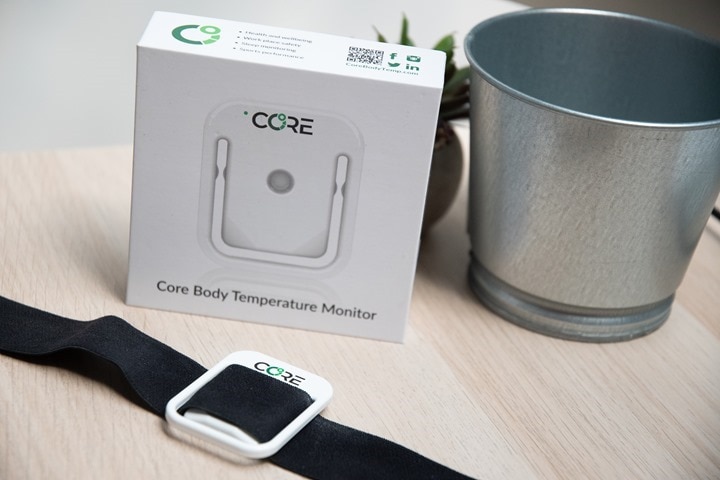
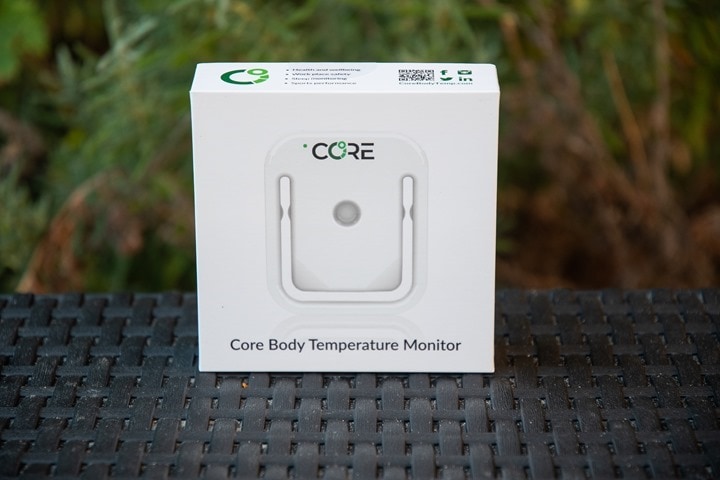
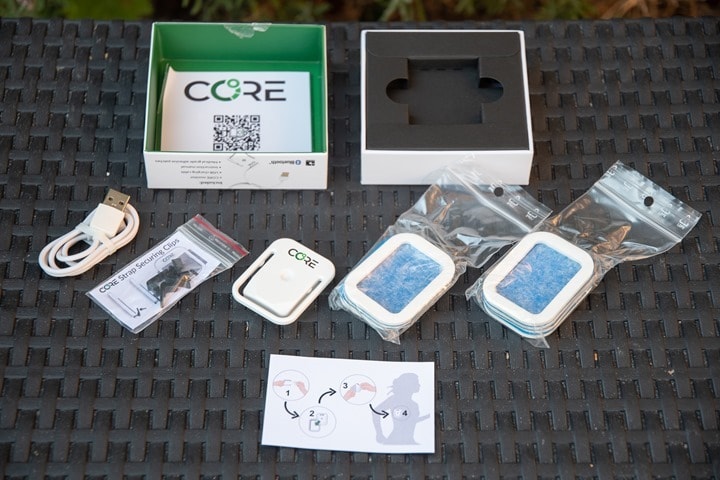
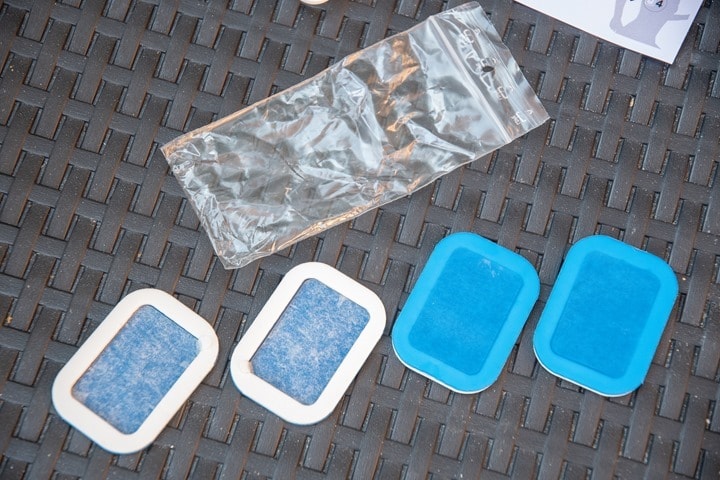



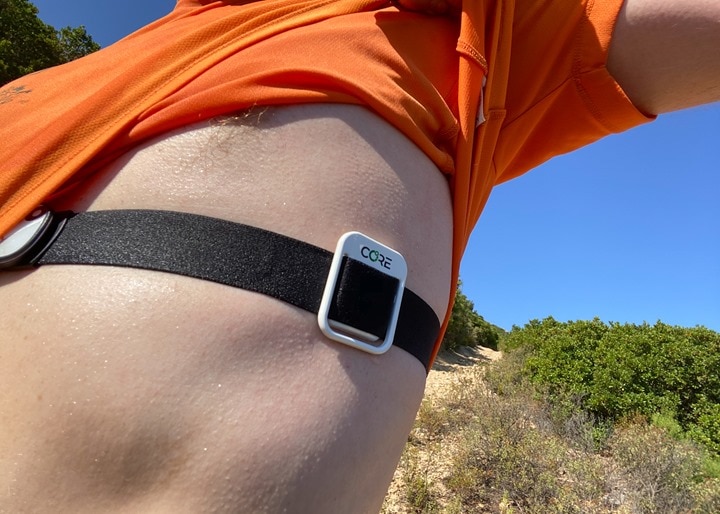
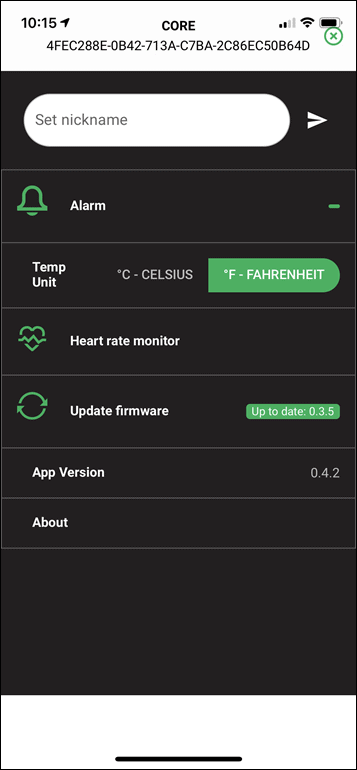
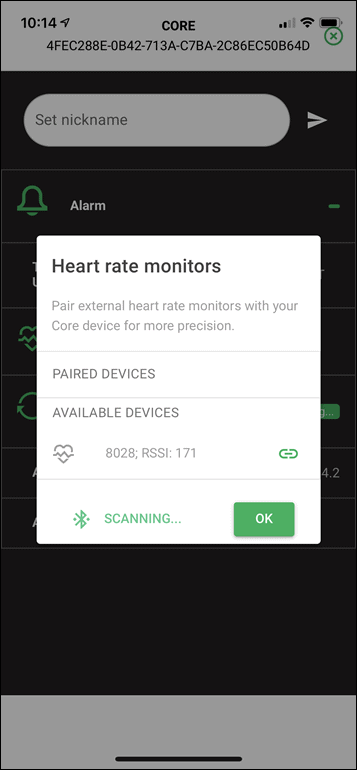
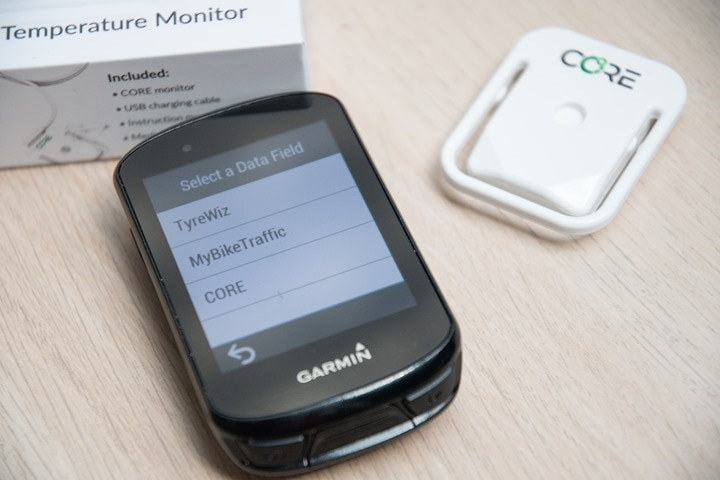
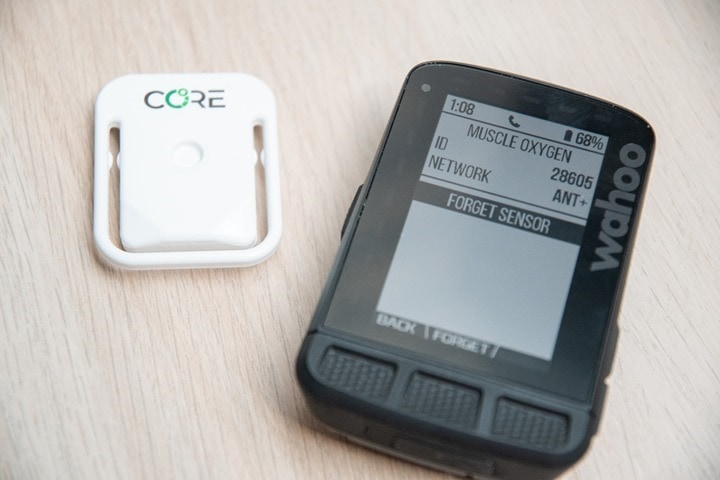

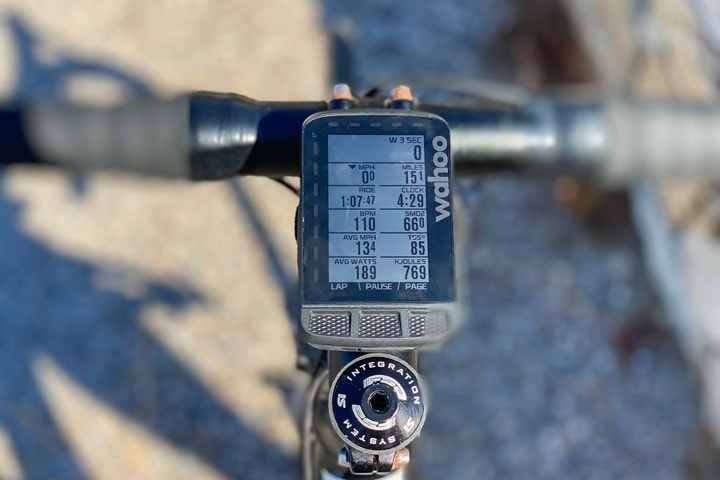
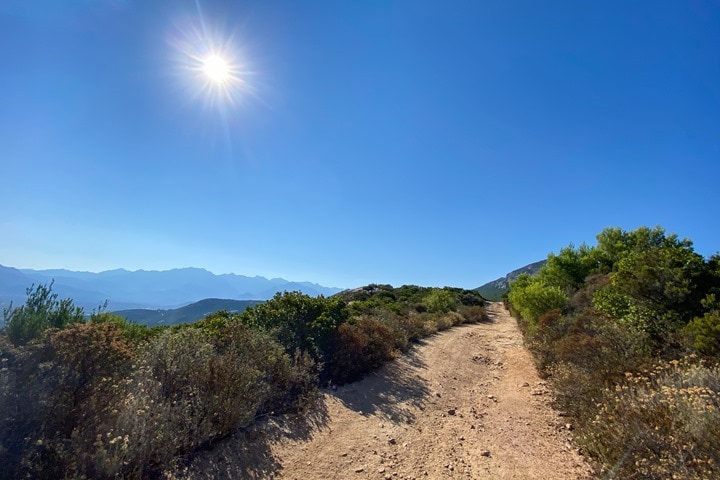
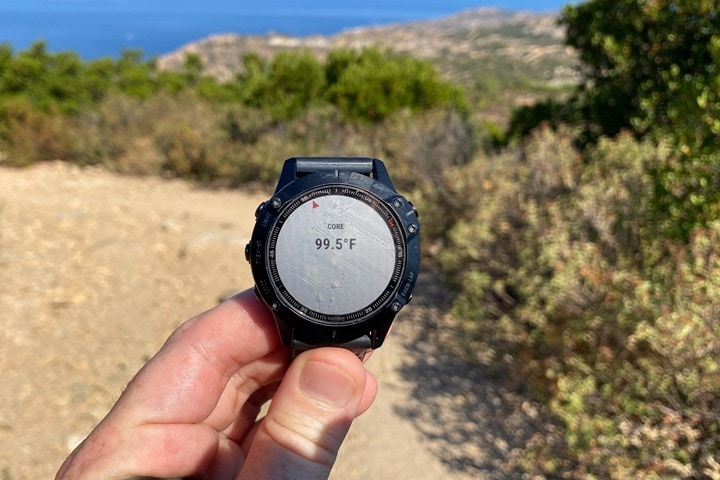
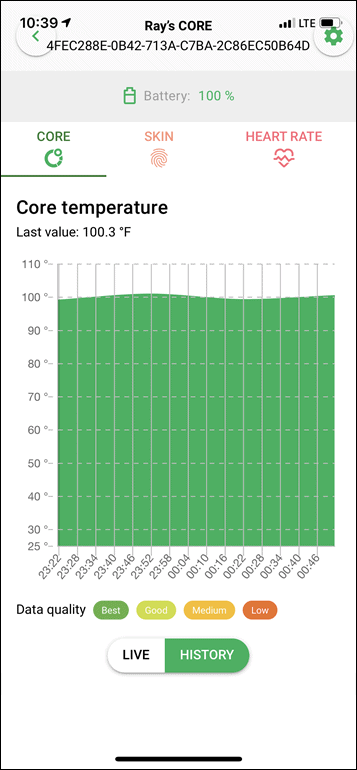
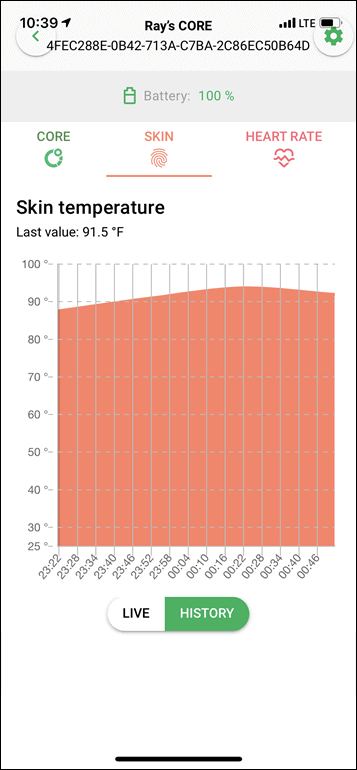





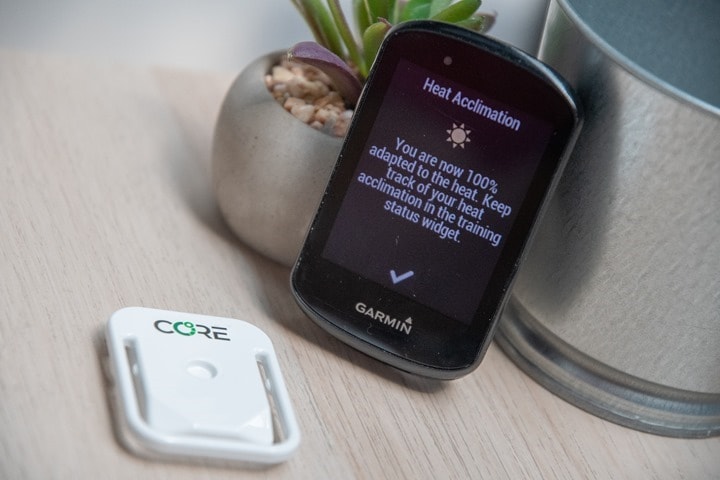
















Hi Ray,
Very interesting device, though pricing-wise it’s probably more for pros right now.
I wonder it the data captured by this thing can be displayed on Garmin Connect instead of Garmin’s “Estimated Body Temperature” ConnectIQ field/graph.
P.S. I’m really surprised that you are still an imperial person despite living for so long in metric countries :)
Yes, data can be displayed on Garmin Connect – in an identical manner to that of the GarminLabs one.
As for imperial, I use both and go back and forth on various devices. Roughly half my readership is imperial, and half is metric. So, I mix and match. It doesn’t much bother me to use either. Randomly of note: Only metric folks ever say anything when I show imperial (always). Zero imperial folks ever say anything when I show metric (ever). ?
Ray,
Did you by chance do any activities with this and the GarminLabs data field active? If so, how do the numbers reported from each one line up?
That’s quite natural, because imperial folks often have to deal with metric values as well. On the other hand many of the metric folks doesn’t even know about an imperial system… ^_^
“Did you by chance do any activities with this and the GarminLabs data field active? If so, how do the numbers reported from each one line up?”
Not yet. I might, but honestly I just need the CORE CIQ data field to get a bit more stable. For example on today’s ride it was good initially, then dropped for a bit, then came back, rinse, repeat. Other rides it’s been great.
Again, they think they’ve got that sorted in the next firmware or app update, so I’ll see. But I agree, would be super fascinating to compare to the GarminLabs one.
I assume you’re talking about this link to apps.garmin.com
“Only metric folks ever say anything when I show imperial (always). Zero imperial folks ever say anything when I show metric (ever). ?”
That´s because the imperial folks know they´ve been wrong since 1799 when the logical metric system was finalized. So they keep quiet while waiting for the metric system to arrive and bless their countries with clarity ^^
Jimmy Carter tried and failed 50 years ago. (Occasionally you’ll still see one of the signs from that period). Ain’t gonna happen. And Fahrenheit is a much more rational choice for temperature in human life than Celsius. 0-100 is the typical range, negative numbers are rarely needed in northern climes up to about 50 N, 100 is supposed to be normal human body temperature. (They slightly botched the measurement, but was the measurement of the meter was also botched. ) Miles also make much more sense for driving, cycling or long distance running than meters (don’t have to chunk them in 1000’s). And since we had our disagreement with King George, we call them “statute”, not “Imperial”.
Googling about the history and definition of a meter will make your head hurt. Though, if you need a trailer into that, start here: link to en.wikipedia.org
There are probably more pros than cons to metric over statute, but it’s all somewhat funny to me. Ultimately, people get used to and understand one system – and it’s as simple as that. There’s no real ‘magic’ behind the definitions of these things, such as the definition of a meter. They’re based on numerical values of another thing, that’s it. A meter could have ended up one apple shorter or longer if they selected a different thing to base it on…which…is exactly what has happened over time – the definition of what a meter is has slightly changed as they changed the underlying definition.
Most Americans can formulate distance and speed between two points just as easily as any non-American, simply using a different system
Ultimately, as easy as it is to make jokes about statute because most of the world uses it, it’s also easy to point out that the US seems to have done just fine using it. It hasn’t stopped companies from building large buildings (all in statute), or businesses from making some of the worlds most sought after products, or even pro athletes from winning gold medals.
And finally, nor has it kept planes from flying – because all of aviation still uses feet, not metric, for altitude. It ultimately took COVID to stop planes from flying.
Or two or more systems. As a scientist I’ve learned the metric system, use it a lot, but not as lot as most people think. (I’ve been told that “scientists use the metric system exclusively”. Simply not true. Statute is almost never used, though.) For example, you’d be hard pressed to find a high energy physicist who knows what the mass of an electron is in grams, but everyone knows that it’s 0.511 MeV, since a set of units is used to make things easier for themselves (basically, everything is measured in energy units, and the fundamental constants \hbar and c are set to 1 so you don’t have to keep writing them). In my personal life, I rarely use metric. But there are weird things left over from the ’70s; the most common large soft drink container in the US is the 2 liter bottle (but smaller ones tend to be in fluid ounces). The US military uses metric; NASA uses what’s convenient but typically does PR in metric. Using A.U. is common in the solar system, using light years or parsecs are common in cosmology. None of those are metric. And as you say, aviation uses feet for altitude and nautical miles for distance.
Plus he has a Canadian wife!
I grew up in Canada so I’ll always think in metric. Even though I’ve been living in the US the last four years. I don’t think I’ll ever get used to temperature in F.
They should shrink that display field scale to within human levels say 90-110 F. You have serious problems if your temp is outside that range.
Yup, I agree. As well as making the time-scale more flexible. It does sound like those types of UI changes are in the works though.
I think you meant Tour of Poland not Tour of Polar although it sounds cool or cold rather.?
Doh!
A peloton of skinny pros on fat bikes in the snow. I’d like to see that. :-)
This is the first piece of sports technology I have seen in a while that I look at and think “this is really interesting, it could make a meaningful difference” – this is as a primarily middle distance triathlete.
The first area you have (maybe inadvertently touched upon) with your photo choice is the Garmin Heat acclimation metric. I personally find it slightly annoying that Garmin isn’t able to use the on device temperature for this metric and instead basis this purely on weather forecast. But with this device, plus device temps it seems to me that there is a really tantalising prospect of being able to refine those heat acclimation calculations to be more adaptive to device temps, to give people points for hot indoor sessions and similarly to adapt the metrics saying – ok actually 22 is a hot day for you, you’re core temp has hit a level that tells me you’re stimulating heat adaptation.
The second one, which might be difficult to model but of course Garmin now estimates your liquid requirements on rides. It seems like this could be an additional input to give hydration guidance both in real time and post event to give some more advanced guidance on sweat levels.
It doesn’t sound like this is quite ready for mainstream (at least for me) and the magic with all of this is what can we actually do with the data and it seems to me that collaboration with Garmin, Firstbeat, Wahoo etc to make use of this data effectively could really add value.
That sounds like a nice gadget. I would definitely pay 20-40€ for this. 230€? Not so much.
If this is any kind of success, maybe Garmin adds it to their HRMs or watches.
Ditto – I read the article and thought €24.99, that sounds interesting… then I saw it was actually €249. I guess as you say that puts serious/pro athletes as the main market for this, not gadget/data geeks like myself.
I suspect there’s viable middle ground. After all, people pay $200 for Stryd in some cases purely as a footpod.
I think for those that live in warmer climates, having a $99-$129 device that had a longer lasting batter and maybe was built into a HR strap could be quite appealing to endurance athletes.
I live in a hot country and at 150usd its no brainer buy!
I am just curious, does anyone know how do they measure core temperature using a sensor on the skin? I can’t see it on their website. Is core temperature just skin temperature plus a few degrees or something? Does that really work? Can I just put a Garmin Tempe on my heart rate strap?
I second that.
What do you think, Ray? Is Tempe a reasonably accurate replacement for all us non-pros?
There are core temp sensors that have been around for years for sports lab use. I know of two types
1. a pill that you swallow
2. a probe…well, you can guess where that goes.
IDK about which protocols either supports for data transmission. I’d imagine that this product has been validated against something like one of these.
I remember reading about one called “cosinus one” that goes into your ear.
It’s not a Thermometer but a heat Flux sensor. As such they do not measure temperature but… Heat Flux that in connection to knowing the skin temperature and some fancy math (neuronal networks) actually enables them to get a good estimate of the core temperature.
Tried using a Garmin tempe sensor in the waistband area and that particular sensor & location never read higher than ~93F which was enough to satisfy my curiosity. In that particular junk science experiment I was interested in over night body temp so a HRM was not involved. The tempe polling interval may be a limiting factor as well.
Tempe is more about air temp, so the air it detects moving into the hole I believe. Rather than internal body temp.
Is there a white paper that describes the method of core temperature estimation? What are the inputs to the model, I wonder?
For both you’d have to be quite committed to getting data to use them (especially probe). And because of that they are most likely targeted at people who actually know how to interpret the data (i.e. team medics)
This would be really interesting for cold water swimming in the winter, where not letting your core temp drop too much is crucial. Also to monitor ‘after drop’ where core temperature falls a while after the swimmer is out if he water. I would love to be able to see that data, but need the price to drop a bit first. Would also like to understand how it measured core temperature, as if it’s measuring blood temp then it may not work in this application.
But you would have a problem of transmitting data from the sensor to the watch underwater.
Putting a sensor on a cap? Like FORM and Polar after doing? That way you’ll get some connection with Garmin.
But then you’ll be measuring temperature of that spot (which might be warmer than your core body temperature). I don’t think you can reliably measure core temperature with a sensor not placed on your core
Rough price point for a device that will require the user to do a lot of work after the fact to determine the usefulness of the results (a factor that pro/elite athletes will not suffer since they have teams/coaches for that).
Are they providing any feedback or analysis with their app? Getting actionable feedback would make it more compelling. (In fact, if they wanted to go the Whoop route, they could build it into a subscription model.) But as a standalone device without a feedback loop, I think most folks will pass.
There’s no current analysis/feedback in the app, beyond the color-coding you see. They did note though that the app is still pretty early days.
Current price of course knocks it off the want-list for most.
Next is application and validation.
It will be interesting to see studies showing the relationship between core temp, HR, fatigue, and performance.
I think there’s likely a value for indoor cycling too.
There is a big difference riding the same workout in a pain cave (aka “the basement”) versus a room or apartment without sufficient fans or the AC cranked up.
As it is now if you are sweating bullets and your HR doesn’t drop much during recovery intervals, my guess is core temp is a contributing factor. If you want to test that theory just turn off your fan during the next hard indoor workout and compare the results. :)
I looked in to temp sensors earlier this year, ( I am a baby in the heat) There were only like two manufacturers and the solutions weren’t really cost effective. I wasn’t even 100% clear that you could buy them from their websites.
So this is really the 1st product that is consumer “ready” and that is win. Also while it feels expensive we have to remember that HR monitors were about the same price when they were introduced.
Also it looks like they are willing to selling just the sensor to (2mm x 2mm XU sensor) to other manufacturers so hopefully we will see in built in to other devices in the future … Or if we are unlucky somebody will buy the whole company …
C
Yeah, one has to wonder if this is something that would go rather perfectly into a HR strap pod (or perhaps, that alignment isn’t ideal – not sure).
I’d guess the current central alignment of HR pods on chest straps wouldn’t work as for some (many?) people it’s the one place where the strap doesn’t actually touch the body. That said, because the pod is just taking HR readings from sensors built into the strap, I don’t think there’s any reason you couldn’t have a strap with the pod mounted in a different position giving it better skin contact. Or potentially the actual sensor contacts could be embedded in the strap with the pod doing the processing/storage in the same way that HRMs do?
it is really very interesting, I’ve been observing this for a long time, came across it in the Connect IQ forum because someone asked about a similar product (Temp Pal).
However, this core is just way too expensive, it’s similar to the Saris Rockerplate, if it only cost half, then maybe OK, if you compare that you get a Stryd Pod for the money.
I have been trying out the data field (Estimated Body Temperature) from Garmin Labs for a long time, extremely interesting, at the end of intervals I usually reach 39 degrees, then I notice that it is a kind of magical limit.
“I’m not entirely sure what my riding buddies would think of me doing a rectal thermometer test mid-ride.”
I think you are really lacking commitment if you do not even try to validate the data like this ?
One reason why I ride solo! ???
I will be purchasing one of these as it makes sense for my situation.
I live in Phoenix, AZ and it’s Hot here in the summer. The next 7 days will all be over 111 F and the coolest morning temp will be 84.
I’m hoping I can monitor my core temp and reduce my efforts when it rises too high.
Hopefully they add an alarm feature to their CIQ app that lets you set a warning temperature.
Right now I just try to take it easy when it’s very hot but it’s easy to start out too hard and wind up suffering on the way back (and the rest of the day).
I live in PHX too and do training at peak heat, but this is just too expensive sadly – I would love to have one for maybe $75 max. I generally rely on heart rate as a proxy to know when to slow down – when it’s 113 out I keep it capped, and if I see my HR staying high or rising even when walking/resting I know it’s the danger zone.
I’d kind of like to ski with one. I do Nordic, so it can be hours out on the trail, generating heat up the hills and on the flats, losing it on descents.
This device sounds very interesting for ultrarunners. But for 250€? Thanks, but no…
They would have made way more customers with 20-40$ price tag.
Waiting for Chinese to replicate the sensor and sell them at 20$ on AliExpress ?
It’s not shipping until September by which time the the Northern Hemisphere is cooling down and mountain road bike climbing or trail running becomes manageable again. After riding some mountains UCI world tour stages last weekend near Geneva Switzerland where I live in 40 deg C heat this looked interesting for the same reason the pro team is looking. I avoid riding my local mountains in July and August after 11am as no matter how well trained I am, I crumble from low 30s upwards in direct sun and possibly would have considered the price after a glass of wine influence tonight but will just watch it until May next year to see how the the pricing goes and if sales scale up. It really is not worth more than 100 CHF to the enthusiastic metric driven athlete and maybe 50 CHF to the gadget prone techy athlete. The data has to provide more meaningful insights based on scientific proven studies. They probably should drop the price collect the data and make the profit from this then flog it Garmin. They probably will.
I absolutely agree on the timing. By the time this would arrive to me, the weather will be such that I’m not highly concerned about heat. I’ve made a reminder to myself to look at this again in the spring when I’ll start thinking about the coming heat. I hope the product is less beta by then, as well.
I’m wondering about the business plan of a widget like this. Seems like this is one or two iterations away from being the next feature on a Garmin watch (whether in house or acquisition).
On the plus side… seems like this is one or two iterations away from being the next feature on a Garmin watch!
If used in parallel with a Stryd power footpod you could get live power target updates based off your temperature. How awesome is that – if a little expensive :)
Ray, how can they claim core temperature from a skin probe? Is there something about it that’s taking a deeper reading?
Quoting from their webpage:
“This sensor keeps accuracy also under non-perfect conditions as changing environmental temperature and convection (indoor and outdoor use) as well as during light physical activity”.
Light physical activity only? Is it just wrong marketing, or do they rather refer to too much movement might impar the measuring?
Just got some feedback from Chris at core body temp,
Extracts from a few questions
The sensor measures energy transfer – not temperature.
If you can measure the energy transfer – then through some complicated math you can calculate the energy source – which is your Core Body Temperature.
So if it is cold and windy or very hot out – the energy transfer from your body is very constant (colder more energy transfer, hotter less energy transfer). Energy transfer is environmental conditions independent. Skin temperature would react like you said and is not an indicator of core body temperature. Actually even ear thermometers are pretty inaccurate – just try one and measure your self a few times and have someone else measure you – the readings can vary more than you expect…
The Core Body Temperature project has been doing clinical studies for over five years now – so it is a little more complicated with a lot of details but basically that is how it works.
Check back soon and there will be a video up soon that may explain it a bit better if necessary.
It sounds interesting, would prefer not to do the leg work on the analysis,m. Will be following with interest, if around £50 cheap or “early bird pre launch discount” it’s an instant buy, but not at the moment at the current price.
I don’t even live in a hot location but I’ve gone to a hospital in an ambulance due to overheating during a summer 10k race. I really suffer in heat.
If that price becomes reasonable and they work out the kinks, I’ll be buying one for sure.
Physiological changes as women approach menopause and beyond mean their triggers to sweat and their thirst cues kick in late. Resulting dehydration and rising core temperature hinders performance and puts women at greater risk for heat illness. This device could be helpful in monitoring for adequate hydration.
Hi Ray, did you try to see how drinking cold water or ice pack would affect the core temperature ?
I checked their website and they do sell e-pill so I guess it has been validated against this
I am Christopher from CORE (greenTEG AG) and can answer a few questions.
The Core Body Temperature technology was touched on and yes, CORE uses a thermal energy transfer sensor that we produce on-location in Zürich, Switzerland. This article on our website describes the technology in more depth: link to corebodytemp.com
For the simplified version, the reference from my colleague Chris which has been quoted is correct. The human body is continually exchanging energy with the environment whilst cooling and warming. This magnitude and direction of energy flow depends on a) environmental temperature and humidity b) clothing c) sweating d) internal heat production rate/ activity level e) convection or relative wind speed f) Irradiation (solar)
Our sensors measure this energy transfer and can accurately calculate the core body temperature. To reach this point has taken over 5 years of R&D and our testing and improvements just this year have seen continual advances in accuracy where we have eliminated the lag and are now down to 0.21ºC accuracy.
With regard to skin temperature and core body temperature, these behave quite differently, particularly when a person is active or moves from outdoors to indoor or from sun to shade. To demonstrate this, with one of the graphs published above by DC Rainmaker from the WorldTour Team, we also have recorded skin temperature and are planning to publish this chart today in our news section: link to corebodytemp.com
As a ‘control’ for CORE, the single-use e-pills (Intestinal Temperature) are most commonly used. Of course we also test with controls including Rectal Thermometers, Bladder Catheters and Pulmonary Artery Catheters which are all very accurate, but invasive and typically unsuited for active sports.
There was also good question on interpreting/analysing the core body temperature data and providing feedback to the athlete. It is crucial to note that each individual is very individual and, for example, we each have a different threshold.
Usually together with a coach, the training and competitive strategies will be developed. Temperature thresholds can be identified and increased (like acclimatisation training) and each athlete will pinpoint the best suited approaches for active cooling to avoid heat-stress. In this context, blanket recommendations within the app would be counterproductive although a customised alert can be set. We are however working with athletes and coaches to build knowledge around core body temperature.
Another good question on drinking water. Hydration is a crucial part of the overall cooling mechanism of the body however drinking alone usually doesn’t directly lower core body temperature. The core body temperature also moves slower than heart rate and power metrics and for athletes in training or competition the approaches are to reduce power and to actively cool so pouring water over the body, for example, will help.
Oh, didn’t know you’re making these in Zürich – then the price is better justified :)
Could you comment on post #42 above – what does it mean “works under light physical activity”?
Danke!
Sure @lustin Pop
Regarding #42, this refers to the CORE for everyday or workplace and safety. DC Rainmaker described it as the 24×7 mode. With the Covid-19 pandemic we experienced a massive demand from businesses and governments for temperature monitoring so we shifted from sports and to the ‘everyday application’. The CORE device which has been available for these customers is currently for 24×7 and not sports (but the firmware can be upgraded when we release in late September).
The CORE for sports has the same hardware and when paired with the HRM will then switch to the sports algorithm. Heart Rate is an important cue as sport effort can be more intense and abrupt. If a bike rider, for example, reaches the top of a summit, the changing heart rate is an important signal that we require to ensure the core body temperature remains accurate.
So to summarise, the CORE with the sports mode (and paired to a HRM) is accurate for intense physical activity while the CORE in everyday mode is for general daily activity.
In the comment above I have included the graph of the WorldTeam training which was published by DC Rainmaker and it shows the Skin Temperature (red) along with CORE and the e-Pill.
how do i get my threshold temp, true a test, like a Ramp Test in cycling?
@fl33tStA this is a great question and we will plan to publish details on this during the next few days.
Christopher: Your product has great potential, as I’m sure you’re aware. Within the consumer market, integration is key. A sensor that just measures is of limited use at a basic consumer level. Integration to the sport watch to tell the athlete to go slower/maintain/faster ie. actionable data, is where the full potential is unlocked. Further levels, as previously mentioned regarding hydration and “stress” levels would further compliment the product.
Thanks for addressing your approaches to building out a knowledge base. While it might take some time to start generating a solid foundation, it at least shows that you are in the early stages of putting recommendations together.
I don’t know what your company’s abilities are regarding more advanced analytical capabilities, but data collection per individual should allow for future advancements in personalizing recommendations if you’ve got the capacity to build it out along with the coaching/team data you are collecting. That might take a backseat for now as you continue to develop the hardware, but it would increase the likelihood of individual athletes like myself as you aim to build up a market.
Good luck as you continue to grow!
thanks, would be intersting!”
Thanks, this is useful. Useful enough that I went to order, only to find out I’m charged an extra 20 CHF for “tax”? I would have expected that the price in CHF is VAT inclusive, but it seems not; thus, with shipping and tax, it’s 30 CHF on top of the (already non-trivial) 250 CHF.
I find the price-without-VAT advertisment a bit unfair, so I’ll delay my order until I see more hands-on reviews. This can be useful, but it is expensive indeed.
and people pay much more for a power meter. This device may prove to be just as useful
Exactly. About the only thing cheaper in Switzerland are Toblerone bars!
I would normally say: there is never a time I could think I would ever want to wear one of those for running.
Yes Cape Town can be 35*C and if I’m fighting the winter storms on Table Mountain it can be chilly without a top on!
That said, with CV19 doing the rounds I have my temp measured at every 2nd place I go in, so maybe it would be interesting.
Not really serious, but why not just simply attach a 30$/€ Garmin tempe sensor at the HR chest strap?
Because Tempe measures air temperature, not skin/body temperature.
Ok. Why not saving 249€ and just using the “Estiminaded Body Temperature” data field?
link to apps.garmin.com
Possibly. I’m looking forward to testing it side by side to see if it’s accurate or not. After all, anyone (Garmin included) can make a data field – it doesn’t mean the data does anything.
My main challenge at present in testing it side by side is simply stability of the CORE CIQ app. Once that gets more stable (hopefully shortly, they say), then I can do better side by side analysis. Weather looks like it’ll stay warm-ish for another week or two.
As far as I have understood, the Core body tempe sensor is not really a thermometer that measures the temperature, the sensor just calculates the temperature from different collected values according to a mathematical formula, right?
So the “Estiminaded Body Temperature” data field does the same, by using the values from the used Garmin device.
I am keen on your comparison. The Core is more for professionals (or who believe in it ) and normal data field perhaps for normal people.
this side by side testing would be very interesting, but the “Estiminaded Body Temperature” data field is a little bit bitchy, normally you have to set every time a base temp before you use it, but when you change it, often the datafield changes to a timer field
i sent this bug to CIQ developer, but no repsonse, so i use it with the default temp, that comes by development.
Oh, it would be interesting to compare it during a Ramp test or so?
As an aside there is already an IQ app that link Stryd to Tempe to give adjusted running power targets. Core would be the next level on if someone could write the app and make it specific to the athlete.
Hi Ray,
have you been perhaps meanwhile been able to compare the Garmin Estiminaded Body Temperature” data field with the Core sensor side by side?
The Garmin estimated body temperature can run on cycling computers, which means it cannot be based on a temperature measurement. How accurate can that be? The temperature estimate in my garmin activities is laughably inaccurate.
For those wishing for a 24.99$ version.
It already exists. It’s called a thermometer.
If you want more precision, go for the anal one !
DCR/All, google ‘usariem core body temperature algorithm’; US Army is doing tons of stuff related to heat injury. not sure what you can get via external links, but i believe they have published as well.
Probably a sizable market segment for this device.
After all, there’s plenty of stat geeks who are anal to the core. :)
If CORE’s predictive algorithm works well I’d like to see this tech on a “next-level” HR strap in the future that performs four functions.
1. HR/HRV
2. respiratory rate
3. core temp
4. position on bike — sensor determines when you are sitting upright (no hands), on the hoods or drops, in aero position, standing, or whatever.
I’m much more likely to consider purchasing that combo at $249EUR. :)
and a glucose monitor
I once backed a HR Monitor wich should be glued with a sticker to the chest. Forgot the name
Never got it because they found out that selling it as a medical device was much more profitable.
I wonder if this CORE Sensors is within reliable 0,21°C of a Bladder Catheters or Pulmonary Artery Catheters how long it will take until CORE chooses that path? I can see a lot of uses in pre-hospital emergency situations, ERs ans IMCs/ICUs where good temperature monitore can be essential for patients and proper treatment. Sticking a CORE sensor onto somebody is much less intrusive than a Bladder Catheter, a rectal thermometer or a Pulmonary Artery Catheter, If it supports wireless transmission to Monitors, it would be a good alternative.
Forgot something:
Even as a professional firefighter, I can see a lot of uses on myself, let it be HAZMAT operations or live fire training. We once used the Texas Instruments platform and tried to build a system for monitoring trainees temperature while in training.
I think, if CORE gets the Connect IQ thing working, I will buy one to see what we can do in our training center with it. HR is monitored with old Polar HRMs wich then transmit over a amplifier to the control room so everybody is monitored.
CORE is a product from greenTEG AG and we supply Thermal Energy Transfer sensors for use across a number of different fields including medical.
Many of the staff have strong sports interests so identified that the traditional approach of capturing accurate core body temperature was limiting – the single-use e-pills capture data for about 1-day and require extra equipment. Once the data is captured, then has to be sync’ed. So CORE was born knowing that we had the expertise and tech to create a solution for performance athletes that is easier and more accessible.
As you have suggested, it can also be used in many other fields and this has been our experience during Covid-19 with demand for monitoring staff for health. The CORE however is not an FDA or medCE approved medical device (yet) and we are really behind CORE for performance sports which was our original vision.
In our Zurich offices, staff wear CORE and we wirelessly capture the signals. A HRM is not necessary to capture accurate metrics for 24×7 activity.
Ray, i have to call out the data given to you about the e-pill as absolute rubbish. When was the last time it took you 6 days to pass food you ate – how regularly are they eating these things!? I was part of a study in 2003 (yes 17 years ago!) that was testing precooling techniques in athletes. Basically 1hr tt in a heat chamber. This was prior to athens olympics as that was going to be a super hot Road TT. They were also trying epills then too (which were fricken huge to swallow!), the issue was that they would get different temperatures depending on which part of the body it was in, or simply the rider would have passed it too fast to be of any use.
I think you’ve mixed up two things.
Nobody is saying epills last 6 days, rather, the body patch battery does (the product this post is talking about).
The longer term comparative data is against an epill, I would simply assume they used multiple pills to cover the timeframe specified, which would seem reasonable to get comparative data (and also a good reason why an alternative would have benefits).
The CORE could be useful for hiking and backpacking in the summer. Even when I am out working in the heat – yardwork, trail building. The heat is less of an issue. The Heat Index is what one needs to watch – air temperature plus Relative Humidity, RH. 30 C / 86 F plus 60 % RH is 91 and danger. link to weather.gov
The CORE would be very useful for fire/rescue and wildland fire. Monitor one’s temperature under PPE, and while working in high temperature environments.
Maybe in the winter. Often one strips down while exercising but the enviroment can cool you quickly even while moving.
Very interesting! Is this compatible with other devices such as my Polar H10 too? I think it will be worth a purchase.
It was looking very interesting right up until I saw the price.
With Covid lockdown, and more indoor training monitoring body temperature to ensure you don’t overheat could be useful. But not for this price.
Wonder if the same technology could be easily embedded in a HRM or sports watch without impacting on price too much?
I’ve gotta imagine that integration into a chest strap wouldn’t be terribly difficult tech-wise.
Thanks for sharing your thoughts Lee.
Overheating is one of the applications. Heat adaption (eg. for racing in hot environments) but also heat block training and heat training are also application. The heat block training increases blood plasma and then blood volume which ultimately improves the cooling efficiency and oxygen transfer to the muscles. In other words a performance benefit.
The CORE uses a thermal energy transfer sensor which we make on location in Zurich and we have a really interested audience of athletes and coaches who have traditionally relied on e-pills and rectal thermometers.
For the cost of 3 – 4 e-pills (and excluding the cost of the activator and reader hardware which is required), the pricing of CORE is actually really appealing.
Regarding embedding in a HRM, yes, this would be a possibility. Also yes to the watch as well and typically you would couple it to the heart rate sensor in the watch. A challenge with the watch is that the temperature inside the extremities of your body can differ to your core / torso. During fever for example, the body may be hot but the feel and hands are cold as the body regulates. For this reason there is better accuracy when placing the CORE device on the torso.
Like your blog , would like to join the newsletter.
Thank you.
Way too expensive for what it does. This is just not worthy, maybe 20-30 not 200 pounds.
Hello Dalogan, thank you for your input.
You would be right if you are suggesting that the CORE sensor is compact and minimal – it incorporates the sensor technology that we make on-location in Switzerland and is the first wearable sensor that provides medically accurate and continuous core body temperature monitoring.
Previously, the main alternative for sports people are ingested e-pills which cost ca. UDS60 -70 each. These also require the additional hardware (activator and reader) and typically is managed by the sports scientists. They are usually a good a reliable solution though measure for a limited time period so are single-use. We have attracted a lot of feedback from the athletes and teams who have used the CORE that it is not only the convenience (behaving like a regular sensor), rather the cost factor makes this a an attractive alternative to other methods of capturing accurate data.
In this respect, the cost and ease-of-use means that this data is no longer limited to the most elite and well-financed athletes. More sports people who are seeking to improve their performance while hot or to avoid dangerous heat stress now have access to reliable data in a far more cost-effective solution.
Sometimes there is confusion between the core body temperature metric (which CORE measures) and skin temperature measurement sensors or other sensors such as tympanic thermometers or infrared thermometers which are not favoured by performance athletes as they don’t deliver the level of accuracy required although are available for low cost. I would invite you to look into the CORE sensor technology in more detail to see how it differs and how it is used for sports performance.
Has any one used this device in a hot climate like Arizona? I ride after work in the afternoon heat and wanted to know if any one found the device useful in their training.
I’m interested in data and sensors. I do have one of these and have looked at the plots across various workouts and longer rides. Honestly the data isn’t super interesting — core temperature starts lower and goes up, generally plateaus and remains fairly consistent. On rides with a break, you can see that core temp is not as responsive as say heart rate.
On a recent indoor ride with a fairly fixed gradient, the plot was basically flat.
I guess what i’m saying is I’m not really finding the information to be particularly useful or enlightening and thus i probably wouldn’t recommend purchase unless you have a more specific use/application.
Thank you!
Ray, So what do we do with this data? Use it to determine how many ice bags we should strap to our chest?
What do you do with the core body temperature data?
This is a fair question – and it is a comparatively new field knowledge like heart rate monitors and power meters that took time to establish following their introduction until it become more commonly known how to apply the data.
|
The fundamental concept is that if you can keep cooler, you have more power output. And if you condition your body to perform more effectively when it gets hot, you can also rely on greater power output.
Guessing temperature is not particularly accurate (perception can be way off) and each person has their own individual temperature behaviour so monitoring the core body temperature is an advantage:
• Monitoring – knowing your individual temperature behaviour in sport, avoiding getting too hot and with this awareness it can be used to help pace and plan ahead.
• Conditioning – Heat Training benefits both power output and the effectiveness of the body to cool. The optimal heat training zone is usually lower than you may think and training in the right zone (and not under or over) is effective.
• Active Cooling – optimise hydration, clothing selection and cooling before and during competition.
@Joel – regarding the number of ice bags, it is not too far off. The elite athletes will go into these type of details to dial in their cooling and work out how they respond best.
In context, the core body temperature is one piece of the puzzle for sporting performance. For elites it is continual optimisation and for many others, it is a new avenue and opens this entire topic up for them as another way to drive sporting benefits.
Great review, as always. One comment though. Where you said:
” it’s gonna depend on where you live/train/race, and whether or not that place is hot. If you’re living somewhere like the Netherlands (me), there’s little reason to get one. It’s just not hot enough”
Heat training isn’t just about adapting to perform in hot conditions, heat training has been shown to improve performance in BOTH hot and cold conditions (Minson and Cotter, 2016, CrossTalk proposal: Heat acclimatization does improve performance in a cool condition, J Physiol. 2016 Jan 15; 594(2): 241–243).
Many find it to be far more effective than altitude training and the training sessions don’t need to be at very high intensity. Heat training leads to increased plasma volume that not only makes for more efficient thermoregulation but it also improves cardiovascular fitness. It doesn’t matter where you live. These devices have the potential to allow a type of training similar to lactate threshold training ie identify a “core temp threshold”, similar to identifying one’s LT, then calculate a training zone based on this information and then training within the zone in an attempt to increase the threshold. For this type of training power output would then become a consequence of what the CORE sensor tells you, rather than having a pre-determined power target. It will be interesting to see where all of this goes. It is rumoured that the currently dominant Norwegian triathletes are using this technology to judge just how hard to push in the bike leg in order to optimise their subsequent running performance. Mark Allen recently said that judging this pacing was always the hardest aspect of Ironman performance for him. He had no way of actually measuring it and he feels that he only ever got it right in his final IM (his sixth? victory there, I think). If these devices are as accurate as the manufacturers claim then I think they will begin to become very popular. It is curious though that there currently doesn’t seem to be any independently conducted validation studies. That would be good to see. Can’t wait to hear anything else you find out about them. Cheers.
I’m wrong about the lack of independent validation: Verdel, N., Podlogar, T., Ciuha, U., Holmberg, H.-C., Debevec, T., & Supej, M. (2021). Reliability and validity of the core sensor to assess CORE body temperature during cycling exercise. Sensors, 21(17), 5932.
Ooops, guess I should have read the study before I posted my last comment. The study I mentioned is : Verdel, N., Podlogar, T., Ciuha, U., Holmberg, H.-C., Debevec, T., & Supej, M. (2021). Reliability and validity of the core sensor to assess CORE body temperature during cycling exercise. Sensors, 21(17), 5932. It concludes that the CORE sensor is reliable (ie the measurements are consistent and repeatable, but not valid ie the measurements do not reflect one’s true core temperature to an acceptable extent. It is hard to believe that a company would release a product without first having its validity confirmed by independent sources. A big part of their marketing is that lots of pro cycling teams and triathletes use the device. But if it’s not valid, why are they promoting it? I’m not sure if the conclusions of the study mean that it is totally useless or if it has some degree of value. Is the lack of validity something that can be overcome by improving the algorithm? I will be contacting the manufacturers and we will see what their response is.
Without getting into the giant argument one way or another, CORE argues that the researchers made some mistakes, and also were on older firmware. There’s an official response posted somewhere that details CORE’s concerns, though I don’t quite have it handy at the moment.
Actually, here’s their initial public statement: link to greenteg.com
They also noted back last September that they were filing a more detailed response with the publisher of the study. But I don’t know where that is.
Thanks for pointing this out Ray. Interesting situation. Just because a device hasn’t been proven to be scientifically valid it doesn’t mean that it is useless for monitoring and guiding training. With power meters, for instance, we’ve been telling people for years that reliability and consistency is more important than having perfect accuracy. But it’s disappointing that the accuracy of this device doesn’t live up to the manufacturer’s claims. Even their response to the validation study is misleading. It was obviously written by their PR people and not their scientists. They make a big deal that the study found their device to have “exceptional reliability”, whereas the wording in the study is: “the first major finding was that the reliability of the CORE sensor is acceptable”. Then they say that: “Repeatability is one of the most important properties for sports training and competition.” But in fact, from a scientific point of view, repeatability only matters if the validity is acceptable. But like I said, that doesn’t necessarily make it useless.
Yeah, it’s hard to know the absolute truth there at this point.
What is clear though, is that a huge chunk of the pro peloton’s cycling teams are using it now, and likely using it in day to day hot conditions much of the year (at training camps/etc…), and probably have vastly more real-world data than any study would. My guess is that even setting aside rectal-thermometer accuracy, there’s probably more than enough trending level accuracy to use it as a rate-limiter. And given these are pros, that’s not the only rate-limiter in effect, but just one metric in their toolbox.
Thanks for the discussions and questions Mark.
During the initial 7 year R&D phase of the sensor technology, a number of studies were conducted, particularly clinical trials which were partner or supported studies. We have published details or results from some of these, though note, these were not independent peer reviewed studies which we knew would naturally take some time after we released the CORE sensor. We are aware of a further independent peer review study that is due to be published shortly.
Regarding the study referenced, the authors confirm that the CORE sensor is reliable. This study however has a misleading conclusion so I would advise reading the complete study and keeping in mind:
– The CORE sensor is validated against e-pills. For this study, a rectal thermometer, a different thermometer type, was used as a reference. These are considered to be highly accurate however the documented divergences between e-pill and rectal thermometers types were not considered when forming the conclusion.
– The authors use their discretion to define their own calculation method and narrower cut-off threshold which they are free to do. The test data was provided to us and we were able to confirm it matches the level of accuracy we claimed.
– Key information related to the testing and validity was provided to the authors though was omitted or not considered in drawing the conclusion. As mentioned by Ray, the firmware version for testing was available, but not documented. It is relevant as the nature of the CORE sensor is that ongoing firmware updates provide continually improving accuracy. Further information on validation for environments and use-cases and capabilities and limitations was provided and is relevant for the conclusion and should be disclosed.
Though the conclusion in the study is misleading, we feel the study is valuable as it verifies the reliability and accuracy for everyday monitoring and for sports use. We have followed a transparent approach in communicating the capabilities and recommend that for research purposes (or any other purposes) that the most appropriate thermometer solution is used.
In high-profile sports, athletes, coaches and teams are continuing to use the CORE sensor and we have had overwhelming support from leading coaches and researchers following the publication of this study regarding the suitability and level of accuracy for use in sports.
If you want to connect, our website chat tool tends to be the easiest way, just asked for me.
Hi Christopher
Thanks for the detailed response. I’m very interested to read the upcoming study that you mention.
You also answered a question that I had, as to whether validity could eventually be improved through firmware updates. It seems that you are hopeful that it can. I look forward to reading the next study and hopefully it will clear up any confusion over the validity of the device. Thanks again.
“I’m not entirely sure what my riding buddies would think of me doing a rectal thermometer test mid-ride.”
1.5 years later and this is still the funniest line Ray has ever written
Haha… thanks Indy!
As a multiple time heat stroke sufferer do you think this device can help keep me out of the danger zone?
@Don, We strictly advise seeking immediate medical attention in the case of overheating. A rectal thermometer is used by medical professionals to ascertain the condition and determine appropriate cooling steps.
The CORE sensor can be used for monitoring and alerts and allow you to take the appropriate steps to avoid reaching a core body temperature which may pose a risk. These steps include ‘active cooling’ and reducing power / pace. With experience monitoring your core body temperature, you can also better plan your training / racing strategy.
As a rule of thumb, it is more effective to take preventative steps and avoid getting too hot than getting too hot and trying to cool / recover.
I’m all too familiar with the traditional methods of measurement and cooling lol. That poor med tent nurse!
But your second comment was more what I was thinking. I’d like to be able to observe the upward trend in near real time and make adjustments to stay below the threshold and stay safe. That could be a game changer and maintain my ability to participate where at this stage I was thinking I might have to quit altogether.
“Interestingly, the company says they’re working with ANT+ to slightly update the ‘Environmental Temperature’ ANT+ profile to be better suited for body temperature versus outside temperature.”
Do anyone know if there’s any progress on this front? I avoid sensors that require ConnectIQ to work (1) out of fear the device will become abandonware (e.g. Humon Hex) and become unsupported on new devices and (2) because of the two CIQ datafield limit on Garmin watches.
Hello @Rob F
The ANT+ Profile for CORE Temp is currently listed as beta on ThisIsAnt so is already documented and available for brands / developers to integrated and write to the FIT file. This profile is core body temperature specific so doesn’t overlap with environmental temperature or other existing ANT+ values.
The Bluetooth profile for CORE Temp (which is fairly similar) is used for Bluetooth hardware and COROS was the first brand to adopt this.
From a accuracy point of view, you can use a 50 USD Adafruit Clue chip instead of a CORE’s Skin/Body Temp Sensor or a Tempe sensor. The chip measures temperature, noise, huminity and many other parameters, and has a nice display. The Clue chip is very accurate according to the data sheet. There is also a case available for the Clue, altough it is not so fashionable:
link to learn.adafruit.com
The disadvantage: you have to do the software integration yourself, and requires programming skills in Micro Python.
For those without programming skills, use a Core sensor or / and a Tempe sensor.
By the way, can a Core and a Tempe sensor be used simultaneously, or do they use the same ANT+ profile, and interfere with each other?
@Peter Gamma, thanks for sharing – we have a fairly open system and activity support integration with other hardware, software and services.
A difference I can point out to the Adafruit solution is that the CORE sensor calculates the internal core body temperature with the onboard ‘thermal energy transfer’ sensor. This differs to sensors that just measure skin (surface) temperature.
With regard to capturing signals from multiple ANT+ sensor, as the sensors usually have their own individual ANT+ ID and broadcast data (rather than creating a connection like bluetooth pairing) the data can be independently captured without interference though it would be up to the device receiving it to manage the data streams.
Can Core as well as Tempe be shown in Garmin Connect, and can these two sensors be shown at the same time?
Yes, this should work.
I confirmed (with the Garmin onboard temperature sensor ather than an external Tempe sensor) and can see graphs and summaries for both the CORE sensor data and the Environmental Temperature.
CORE delivers different values to the environmental temperature values so I would not expect any issues with the the Tempe.
In Garmin Connect, the charts are displayed individually. Other training software can provide better comparisons or overlaps such as Trainer Road, TodaysPlan, Golden Cheetah, Intervals ICU to bring in the FIT file data.
That is fine. Can the Core temperature sensor data also be found in the .fit file?
Are there any current discounts/specials/coupons for the Core product?
Hallo Ray, nice review. Have you tested this sensor in combination with the Elite Aria Fan? How well does this work during an indoor ride? Is it worth buying the sensor or is it more convenient/efficient to control the fan manually?
Alvast bedankt, met sportieve groet,
Will LOURIER
Leiden
Coming March 2025: CORE 2
Featuring a new and improved design, CORE 2 isn’t just a smaller sensor—it’s a smarter tool for real-time thermal monitoring
link to corebodytemp.com
Ray,
Do you have a v2 for review? I’m a long time user, but hoping for a better experience with v2
After 6 months use I have found the core body temperature sensor to be a beta product. It seldom records a 3 hour ride in full and will stop working on most rides. Would have been great if I this product could have been critically reviewed as it would be classed with products not ready for sale to the general public.
Please review this product!
I’ll be reviewing the newly released version.
That said, I’ve used the CORE for years (as has my wife), without any issues.
Theodor,
A couple of things that might make using the CORE easier.
Wear the sensor for at least 15 minutes before an activity to get the sensor matched to your body temperature.
I live in a warm weather location, and I would see the sensor work for a while and then just drop. This would happen when I drove to a trail to ride. I suspect the sensor couldn’t manage going from 70F in the car to quickly changing to 85F when I started riding. Now I just put on the HR band and CORE sensor when I get in the car. Fixed the issue with Garmin Edge 1030, 1040, and 1050.
I would also suggest turning off the Standby Mode. I don’t know if the is related to the dropout issue or not, but after the first CORE sensor I owned bricked I wouldn’t chance it.
For Runners additional tips
CORE and Stryd issues – you will need to set Display Option 32 for CORE
https://forums.garmin.com/sports-fitness/running-multisport/f/forerunner-965/335989/issues-with-core-and-stryd—data-not-displaying-in-garmin-connect
Create a seperate 1 Field Page for each Garmin IQ App
That means there will be one page on your watch that displays the CORE temp field and one page that displays the Stryd data. When I had two IQ apps on the same page it caused constant issues – FR945, 955. 965
General Issues
The data sync process is not consistent. The first big issue is that you can’t tell if the servers are down. If the servers are down it just refuses to sync. It would be nice to just get a generic – ‘Server Down Sync Later’ or a generic status page like Garmin link to connect.garmin.com
Another feature that would be welcome is a Sync complete message. Currently you just have to leave the phone open and guess.
CORE is unable to merge data. If you lose, break, or upgrade they can’t merge the data. Support stated that they will move your current Score to the new sensor, but you can’t see the information under one sensor.
I’ve been going back and forth on this for a while. I decided to pull the trigger since its on a good sale right now with the new version coming out. It appears that V1 works well and while there may be other data eventually from V2, the website made it sound like they were going to be mostly the same feature-wise for now.
Extra bonus…buying them at the feed got me a $20 store credit 8). I live in the deep south and I’ve always really struggled with heat so I’m hoping to get some insights here on how to adjust my training during the spring and summer. (Case in point…I woke up TODAY and it was 78F outside. Gross.)
It’s the singe worst piece of fitness equipment I have ever bought. Very expensive, battery drains randomly to the point where when I go to use it it’s random as to whether or not it will work, horrible and clunky integration with Garmin, and all of this for it to tell me my temps went from 98.6 to 100.3 during a ride. Ok, thanks